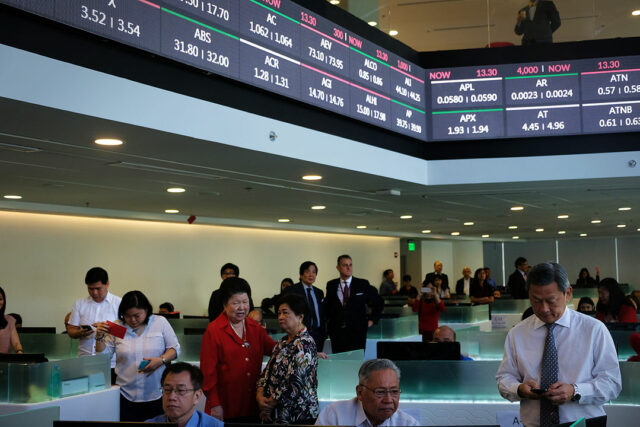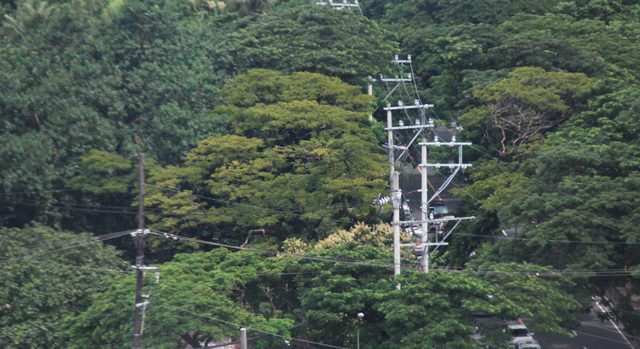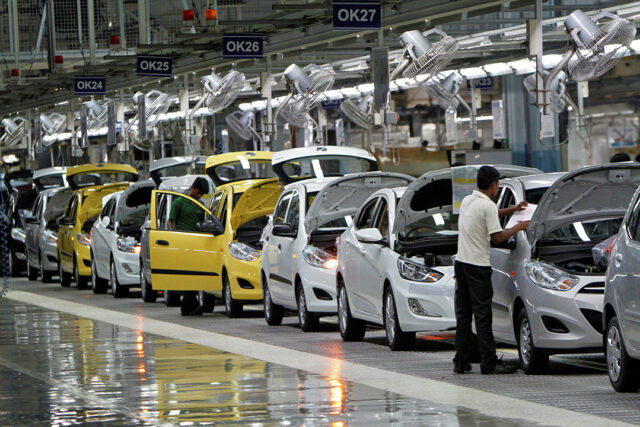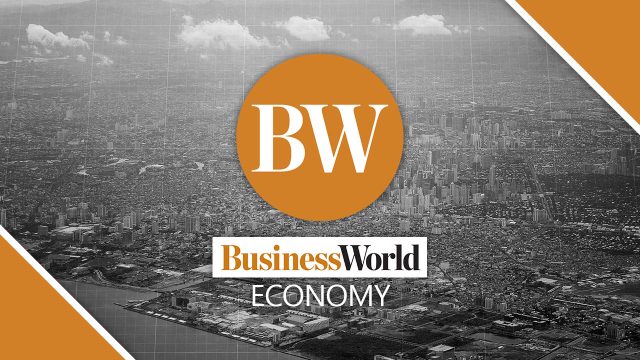Shares decline further as peso sinks to P57 level
PHILIPPINE STOCKS dropped further on Wednesday as investors continued to book profits and with the peso closing at the P57 level for the first time in almost two months.
The bellwether Philippine Stock Exchange index (PSEi) dropped by 1.49% or 112.73 points to 7,424.52 on Wednesday, while the broader all shares index lost 1.08% or 44.05 points to end at 4,033.36.
“The local market extended its decline this Wednesday as investors continued with their profit taking,” Philstocks Financial, Inc. Senior Research Analyst Japhet Louis O. Tantiangco said in a Viber message.
“The local currency’s weakening against the dollar also contributed to the market’s drop,” he added.
On Wednesday, the peso closed at P57.02 per dollar, dropping by 11.50 centavos from its P56.905 close on Tuesday, based on Bankers Association of the Philippines data.
This was the peso’s weakest finish and was the first time it ended at the P57 level against the dollar in nearly two months or since it closed at P57.245 on Aug. 16.
“Philippine shares succumbed to profit taking after briefing touching the 7,600 level at overbought territory as investors gear up for the US consumer price index. Markets found little relief in easing oil prices, which were countered by ongoing Middle Eastern tensions,” Regina Capital Development Corp. Head of Sales Luis A. Limlingan said in a Viber message.
The PSEi on Monday hit an intraday high of 7,604.61 before closing at 7,554.68, which was its best finish since January 2020.
“Investor enthusiasm waned as expectations grew that the Federal Reserve may slow future rate cuts due to a robust labor market. Oil prices dropped on Tuesday as the rally spurred by rising geopolitical tensions came to a halt, with the market awaiting Israel’s response to Iran,” Mr. Limlingan added.
Hezbollah militants targeted Israeli soldiers near the Lebanese border village of Labbouneh with artillery shells and rockets on Wednesday, the group said, a day after Israel said it had killed two successors to its slain leader, Reuters reported.
All sectoral indices closed lower on Wednesday. Holding firms retreated by 1.77% or 113.44 points to 6,281.47; mining and oil dropped by 1.71% or 153.66 points to 8,823.72; financials went down by 1.68% or 40.38 points to 2,359.54; services decreased by 1.64% or 38.69 points to 2,318.38; industrials shed 0.7% or 70.21 points to close at 9,965.01; and property slipped by 0.53% or 15.86 points to 2,934.74.
Value turnover declined to P5.3 billion on Wednesday with 917.06 million issues traded from the P7.39 billion with 1.22 billion shares changing hands on Tuesday.
Decliners outnumbered advancers, 122 versus 72, while 64 names were unchanged.
Net foreign selling stood at P402.75 million on Wednesday versus the P428.08 million in net inflows recorded on Tuesday. — R.M.D. Ochave with Reuters












